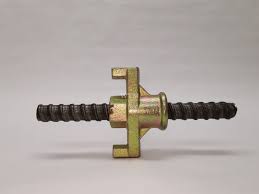How to Utilize a Wing Nut Effectively
Wing nuts might not grab the spotlight like other fasteners, but they are a crucial component in DIY projects, furniture assembly, and even industrial applications. Thanks to their unique design, wing nuts allow for easy hand tightening and loosening without the need for specialized tools.
Whether you’re a professional contractor or a casual DIY enthusiast, understanding the proper use of wing nuts can be a game-changer. This blog will provide everything you need to know about wing nuts, from their definition and benefits to common applications and expert tips for using them effectively.
What is a Wing Nut?
A wing nut is a type of fastener with two large “wings” on either side, allowing it to be easily twisted by hand. This innovative feature eliminates the need for tools, making wing nuts ideal for applications where quick adjustments or frequent assembly and disassembly are required. Wing nuts are available in different materials, including steel, stainless steel, brass, and zinc-plated steel. They come in various sizes to fit a range of screws and bolts.
The term “wing nut” is derived from the nut’s shape, as its protruding sides resemble a pair of wings.
Wing Nut Variations
- American Style (Straight Wings): Features straight wings for a more industrial look.
- German Style (Rounded Wings): Also known as DIN 315 nuts, these have rounded “mouse ear”-like wings.

What is Wing Nut Slang?
Interestingly, the term “wing nut” has also made its way into slang. It’s often used to describe someone with eccentric or unconventional ideas. However, this has no bearing on the hardware, which is consistently reliable when it comes to practical applications!
Benefits of Wing Nuts
Wing nuts are prized for their versatility, ease of use, and efficiency. Here are some specific advantages they offer:
- Tool-Free Convenience
Wing nuts can be tightened and loosened by hand, which saves time and effort in assembly and disassembly processes.
- Quick Adjustments
Easily make adjustments without needing to lug around tools, making them ideal for temporary setups or items that frequently need repositioning.
- Versatility
With applications ranging from woodworking and machinery to DIY crafts, wing nuts are incredibly versatile and suitable for multiple industries.
- Reusable Design
Unlike some other fasteners, wing nuts can be reused multiple times, which makes them both eco-friendly and cost-effective.
- Aesthetic Appeal
Their clean, polished look adds a touch of sophistication to projects where the fastener is visible (e.g., furniture).
When to Use a Wing Nut
Wing nuts are best utilized in scenarios where fast, tool-free adjustments are necessary or where ease of disassembly is a priority. Common examples include:
- DIY Projects – Perfect for securing parts in craft or hobby projects.
- Furniture Assembly – Used in items like beds, chairs, and tables that may require periodic reassembly.
- Machinery Maintenance – Great for attaching covers or panels that need frequent access.
- Automotive and Marine Applications – Used for securing components that may need intermittent adjustments.
- Home Décor & Displays – Ideal for temporary signage, photo displays, or light fixtures.
The Disadvantages of Wing Nuts
While wing nuts are incredibly useful, they come with a few limitations:
- Limited Torque
Hand-tightening does not allow for high torque applications. For load-bearing applications, you may need traditional nuts and wrenches.
- Potential for Loosening
Because they rely on hand-tightening, wing nuts may loosen over time in high-vibration environments.
- Softer Materials
Some wing nuts, particularly those made from softer metals, may not be suitable for heavy-duty applications.
- Appearance in Certain Settings
Although aesthetically useful in some projects, the wings can look out of place in sleek, minimalist designs.
Step-by-Step Guide to Using a Wing Nut
Follow these steps to ensure you’re using your wing nuts effectively, no matter your project.
1. Select the Right Size
Make sure your wing nut matches the screw or bolt size you’re working with. Mismatched components will result in weak fastening.
2. Align the Components
Position the parts to be fastened properly. Double-check alignment to avoid strain on your materials once secured.
3. Insert the Screw or Bolt
Push the screw or bolt through the components before attaching the wing nut.
4. Hand-Tighten the Wing Nut
Twist the wing nut onto the exposed threads of the screw or bolt. Tighten it using your fingers, rotating until secure.
5. Add Washers if Necessary
For added stability or to protect surfaces, consider using flat or split washers.
6. Check and Adjust Regularly
If your project involves vibration or regular use, periodically check the wing nuts to ensure they remain secure. Hand-tighten as needed.
Materials & Finishes
Not all wing nuts are created equal. Depending on your application, you may benefit from specific materials and finishes:
- Zinc-Plated Steel: Offers corrosion resistance, making it ideal for indoor projects.
- Stainless Steel: Durable and resistant to rust, perfect for outdoor or marine use.
- Brass: Combines corrosion resistance with visual appeal for decorative purposes.
- Plastic: Lightweight and inexpensive, but less durable than metal options.
Tips for Maintaining Wing Nuts
- Store in a Dry Location: Moisture can lead to rust over time, especially for non-coated wing nuts.
- Use Rustproof Materials for Outdoor Projects: Stainless steel or zinc-plated options are best for outdoor use.
- Clean Periodically: Dirt and buildup can reduce efficiency, so clean wing nuts regularly if exposed to harsh environments.
Wrap-Up
Wing nuts may seem like a simple piece of hardware, but their versatility and ease of use make them a staple in numerous applications. Whether you’re assembling furniture, need quick adjustments for DIY crafts, or maintaining machinery, wing nuts provide a reliable and user-friendly solution.
Got a project in mind where wing nuts can elevate your work? The next time you reach for fasteners, consider the convenience and practicality of wing nuts.
Explore our detailed product range at [Your Brand Name] and find the perfect wing nuts tailored to your unique needs.



